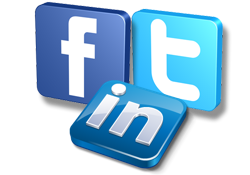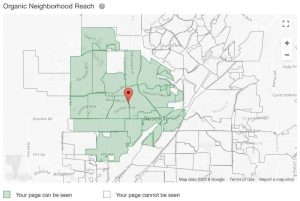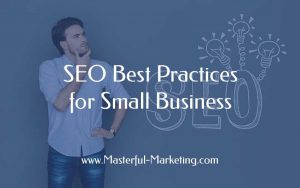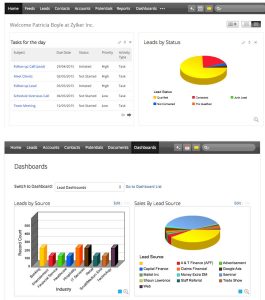It’s time to delve into social media ads. You know the type: each leading social platform has its own native PPC advertising program (or programs). So is it the same sort of internet marketing as AdWords?
Yes and no. Let’s break down the basics of the native PPC internet marketing programs of Facebook, Twitter, and LinkedIn to gain a fundamental understanding of the landscape. We’ll go through a sort of introductory glance at each platform, its advantages, and its PPC program, then we’ll cap off with a key takeaway that spans all these PPC possibilities.
 Facebook: Everyone’s Social Network
Facebook: Everyone’s Social Network
It’s not hard to make a case for Facebook: everyone’s in it. And rule #1 of internet marketing is go where the audience already is.
Facebook offers a variety of ad options that “boost” your presence in the platform; you’ve probably noticed them if you have a personal account, the most prominent (but not complete) of which are:
- Image ads that can be seen at the right side
- Promoted pages that appear in your feed
The display ads are grounded in the same PPC principles as AdWords, but promoting your posts to gain better affinity with users who already showed signals of liking similar pages can also be useful.
Facebook can target specific demographics — this is always handy, but the beauty of its PPC program is its internal algorithm where it matches your ads to people who might really be interested in the same subject matter – after all, they have all the data they need to make the right match.
You set the target demographics, and then the budget bid, and Facebook shows estimated reach and garnered “likes.” Easy-peasy.
Twitter: The Micro-Content King
The most prominent PPC internet marketing program of the 140-character micro-content platform is its “promoted Tweets.” It’s like Facebook’s promoted posts, except instead of targeting specific users, promoted Tweets sort of trail after similar tweets.
So if you’re a Twitter user and your activity suggests that you usually engage with certain Tweets, promoted Tweets will display at the top of your feed and right below the best Tweets.
The PPC controls offer basic demographics and geo-targeting, plus it incorporates Twitter’s hashtag system. Pretty straightforward.
LinkedIn: Social Networking for Professionals
LinkedIn is usually all about B2B. B2C PPC advertising is also possible but engagement might not be as expected because of the nature of the platform.
Your best are the straight-as-an-arrow LinkedIn ads; the simplest of all three on this list in terms of setting targets etc. LinkedIn does show estimated reach. But because of its simplicity, LinkedIn sort of forces you to focus instead on conversion optimization: what sort of images and text lures users to clicking your ads?
These options cost about the same as AdWords PPC; if you do it right, less so.
Moving towards a lucrative internet marketing campaign
These are just the basics. But if you add re-marketing and social intelligence gathering to leverage social proof, you have the beginnings of very lucrative social PPC internet marketing machine.
So you have a fundamental understanding of the social PPC landscape, but wait: you need to understand that each of these would probably require several campaigns each to be effective, and then this entire effort is only a portion of a bigger whole, probably including your ol’ AdWords.
The key here is not only to vary your ads and platforms, but purposely vary them. Target the specific platforms that can make the most ROI to gain traction faster, and then develop your efforts by scaling up.
Digital & Social Articles on Business 2 Community
(349)
Report Post






